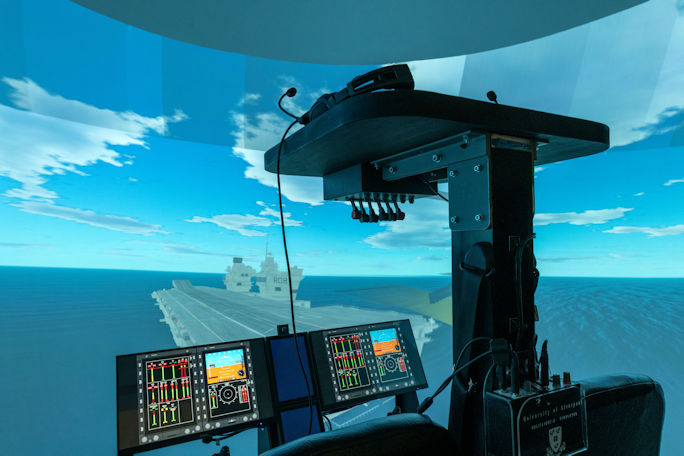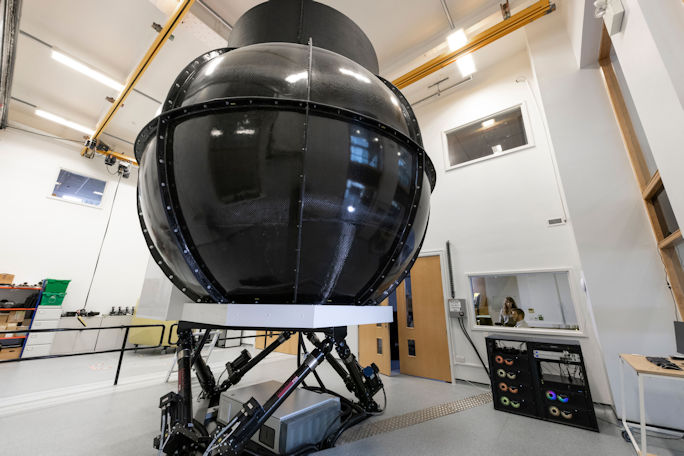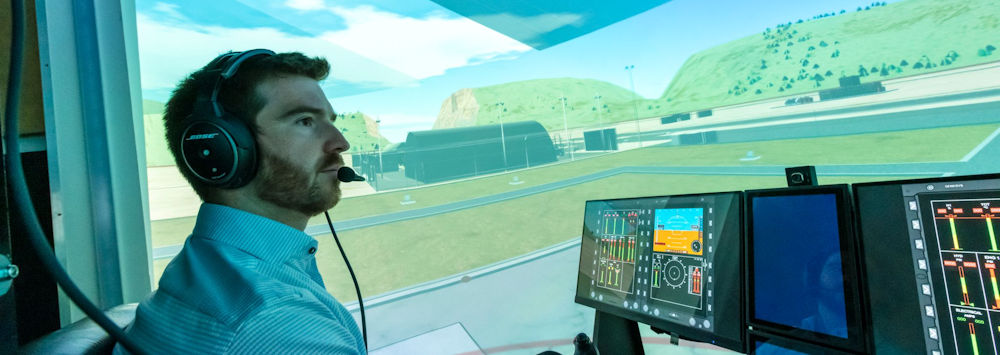HELIFLIGHT-R underwent significant upgrades in 2016 to increase projector resolution, and again in 2021 to add a fourth projector to increase downward field of view. The instrument panels were also updated in 2021 to large, higher-resolution, multi-touch displays to enable use of modern glass-cockpit interfaces. High precision eye and head-tracking systems also allow for sophisticated human factors analysis in the simulator.
|
|
Displacement |
Velocity |
Acceleration |
|
Pitch |
-22.3°/+25.6° |
±34°/s |
300°/s2 |
|
Roll |
±23.2° |
±35°/s |
300°/s2 |
|
Yaw |
±24.3° |
±36°/s |
500°/s2 |
|
Heave |
±0.39 m |
±0.7 m/s |
±1.02 g |
|
Surge |
-0.46/+0.57 m |
±0.7 m/s |
±0.71 g |
|
Sway |
±0.47 m |
±0.5 m/s |
±0.71 g |

Projects
The HELIFLIGHT-R has been extensively used in the Horizon 2020 Rotorcraft Certification by Simulation (RoCS) project. RoCS aimed to explore the possibilities, limitations, and guidelines for best practices for the application of flight simulation to demonstrate compliance to the airworthiness regulations related to helicopters and tilt-rotors. The HELIFLIGHT-R was used to successfully demonstrate case studies of rotorcraft certification by simulation. More information can be found at the RoCS project website: https://www.rocs-project.org
The Rotorcraft Simulation Fidelity (RSF) project partnered UoL with the National Research Council (NRC) of Canada to develop a novel toolset for flight simulation fidelity enhancement by closely modelling the NRC’s Bell 412 Advanced Systems Research Aircraft.

Back to: School of Engineering
